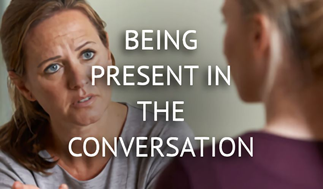How Executive Coaching Works; Attending to Our Clients

As Executive Coaches, we’re here to help individuals, teams, and organisations perform better in our increasingly blended world.
We provide a challenging yet creative space to achieve personal insight and support the achievement of a client’s personal or professional potential.
Things are changing in coaching:
- We live in a changing world with the rapid blending of work and home life!
- Technology is moving at an ever-increasing pace.
- We live in a globalised world, even if we may travel less in the future.
- Society is ever more fluid.
“We live in a world of opportunities – each one more appetising and alluring than the previous one, each compensating for the last, and providing grounds for shifting to the next”. Zygmunt Bauman
- We suffer constant scrutiny and transparency. We live in a social media world where one wrong comment or like can mean reputational damage.
Because of all these changes and that no two humans are alike, the coaching process is not the linear model proposed in many of the ‘how to do coaching’ books and training courses.
Executive Coaching is a relational practice, and I have heard it described as the acceptable face of counselling for business leaders. Whether this is true or not, statements like this give an insight into what is going on during the coaching process.
For the coaching process to attain the depth needed to break through into creative and insightful conversation, coaches need to be present and in attendance to their clients.

By being present and attending, the coach creates a safe enough environment that will:
- Build trust.
- Create a confidential space.
- Offer empathy, understanding and respect.
To do this takes a considerable amount of effort on the part of the Executive Coach. It is a whole-body experience based on reflective and reflexive practice and includes:

- Give someone your whole attention
- Pay attention to everything they say and do, including reading their facial expressions and body language.
- You should be aware of silences and pauses.
- Attending conveys information, but it also encourages clients to think and talk.
- It makes them feel safe enough…
- It requires focused concentration and interest in the speaker.
- The listener should be encouraging, motivating, and reassuring.
Using SOLER ….
The SOLER model was developed by the psychologist Gerald Egan, and can be really useful when practicing being whole body client focused. You can find the model in his book, ‘The Skilled Helper. As you can see from the graph, communication is only 7% words, with the other 93% split between non-verbal communication and tone, pauses and intonation during speech.

This means that the way you present yourself and attend to the client is critical.
Egan’s way of using non-verbal communication helped clients feel comfortable, secure and appreciated.
S – Sit squarely / Not intimidatingly / Be involved
O – Open / Available / Non-defensively
L – Lean in / Engaging / Interested
E – Eye contact / I’m here with you / I see you
R – Relax / Don’t fidget / Don’t hide behind note taking.
If you enjoyed reading this post, please look at other interesting titles linked below.
What makes a great executive coach?
The big ten questions to ask when looking for a coach
If you have considered coaching and/or mentoring, please drop me a line. I am offering free 30-minute sessions to establish if there is a need in the business community to assist with the unprecedented and rapid changes we all find ourselves in.
These sessions can be booked in with me directly via email andrew@woodward-consulting.net
Revealing the leadership secrets for a successful business
Lessons from high performing business leaders
